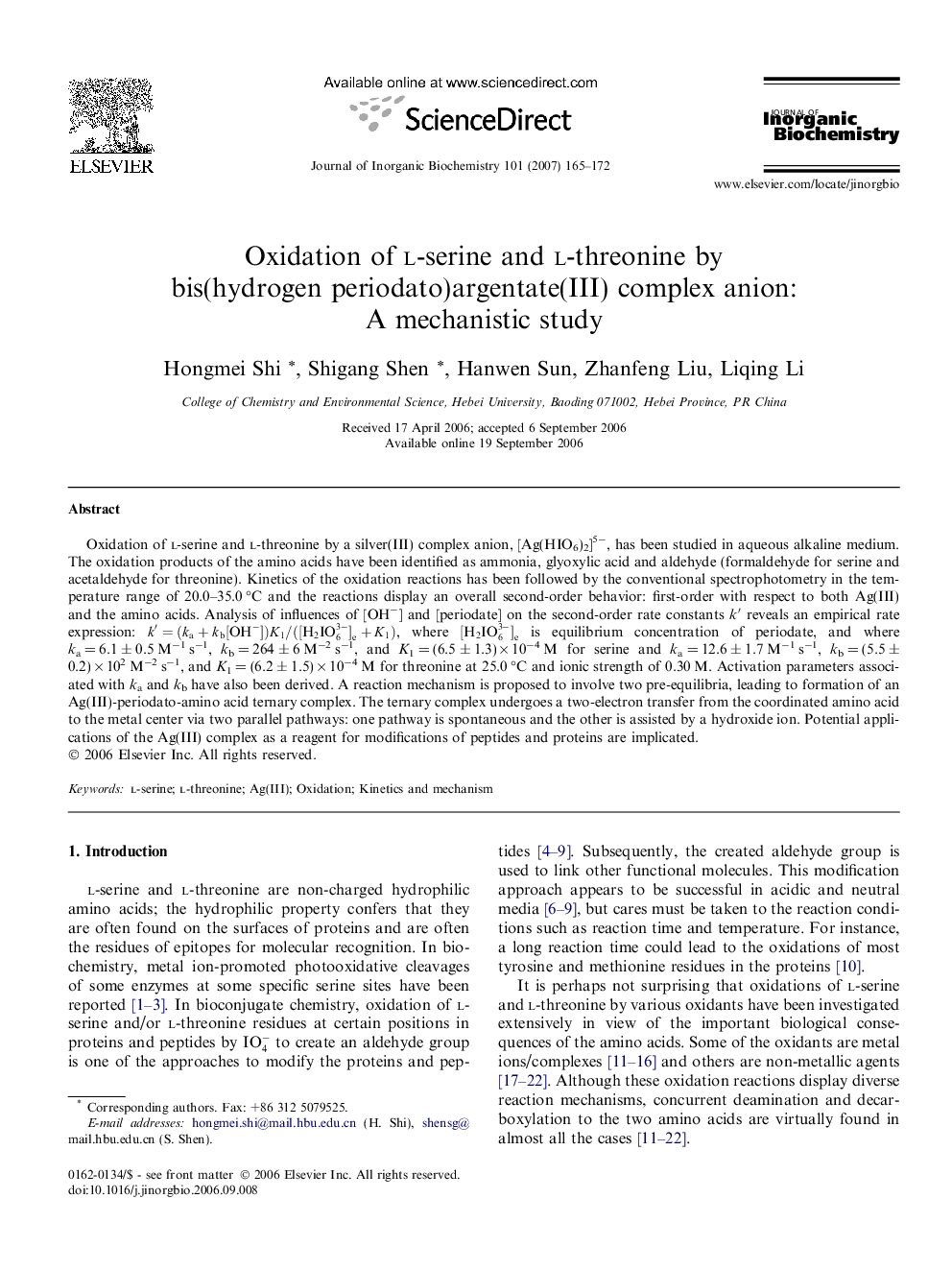| Article ID | Journal | Published Year | Pages | File Type |
|---|---|---|---|---|
| 1316552 | Journal of Inorganic Biochemistry | 2007 | 8 Pages |
Oxidation of l-serine and l-threonine by a silver(III) complex anion, [Ag(HIO6)2]5−, has been studied in aqueous alkaline medium. The oxidation products of the amino acids have been identified as ammonia, glyoxylic acid and aldehyde (formaldehyde for serine and acetaldehyde for threonine). Kinetics of the oxidation reactions has been followed by the conventional spectrophotometry in the temperature range of 20.0–35.0 °C and the reactions display an overall second-order behavior: first-order with respect to both Ag(III) and the amino acids. Analysis of influences of [OH−] and [periodate] on the second-order rate constants k ′ reveals an empirical rate expression: k′=(ka+kb[OH-])K1/([H2IO63-]e+K1), where [H2IO63-]e is equilibrium concentration of periodate, and where ka = 6.1 ± 0.5 M−1 s−1, kb = 264 ± 6 M−2 s−1, and K1 = (6.5 ± 1.3) × 10−4 M for serine and ka = 12.6 ± 1.7 M−1 s−1, kb = (5.5 ± 0.2) × 102 M−2 s−1, and K1 = (6.2 ± 1.5) × 10−4 M for threonine at 25.0 °C and ionic strength of 0.30 M. Activation parameters associated with ka and kb have also been derived. A reaction mechanism is proposed to involve two pre-equilibria, leading to formation of an Ag(III)-periodato-amino acid ternary complex. The ternary complex undergoes a two-electron transfer from the coordinated amino acid to the metal center via two parallel pathways: one pathway is spontaneous and the other is assisted by a hydroxide ion. Potential applications of the Ag(III) complex as a reagent for modifications of peptides and proteins are implicated.
